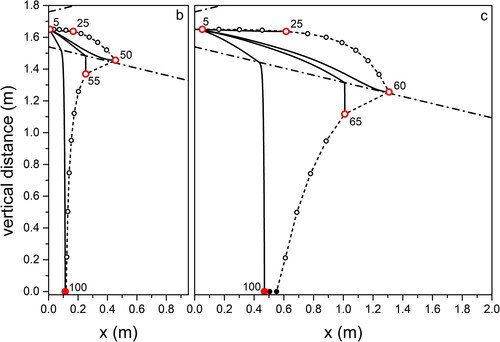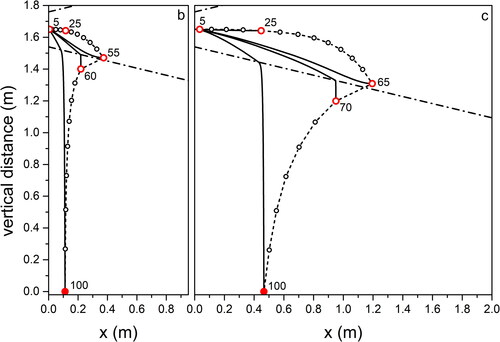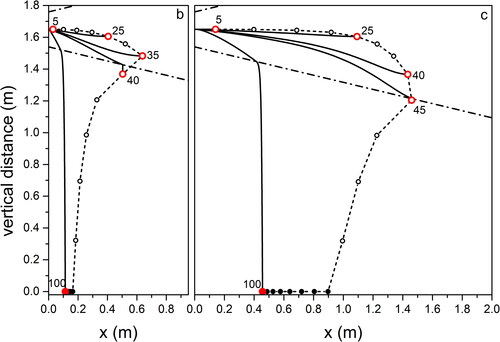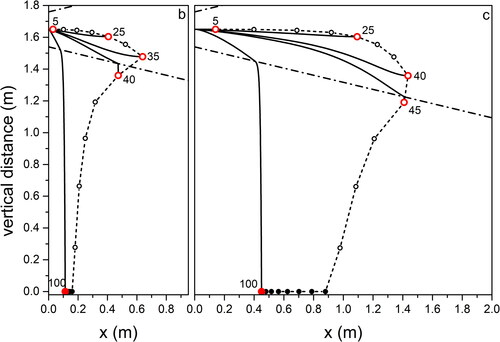Figures & data
Figure 1. schematic of the mutual position of the virtual source (VS), the mouth (M), the origin (O); droplet trajectories were calculated from O; the dashed-dotted lines enclose the region through which the aerosol spreads out, as defined by the ejected flux angle θ = 25°. Blue lines, marked c (cough) and b (breath) indicate the space dependent velocity of the ejected flux at the instant tO when the peak of the flux velocity crosses O.

Table 1. Air flux velocity at M and O for breath and light cough; tO, calculated time required to the air flux to travel from M to O.
Table 2. Weather conditions for the considered outdoor environments. Data retrieved from CF VDA, Centro Funzionale Regione Autonoma Valle d’Aosta; Arpal, Agenzia Regionale per la Protezione dell’Ambiente Ligure; ARPA Lombardia Servizio Meteorologico Regionale.
Figure 2. Calculated time required by differently sized (diameter between 5 µm and 200 µm) saliva droplets to fully evaporate, or to fall on the ground under free fall conditions in stagnant air. Red full lines correspond to a city and a seaside small town in Summertime (environments a and b, ); black, dashed lines, correspond to a mountain village in Winter (environment e, ). Open symbols are for droplets that completely evaporate in air; full symbols are for droplets that impact on the ground at the end of their flight; stars are for droplets that evaporate just impacting on the ground.
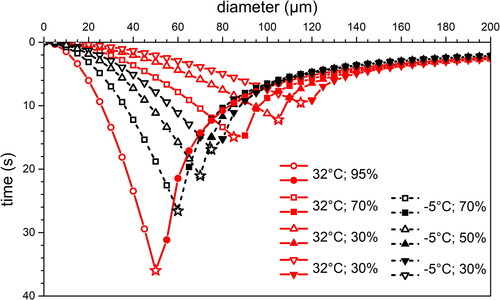
Figure 3. Calculated trajectories parallel to the ground, starting from O, of differently sized droplets for propagation in outdoor environment typical of a city in Summertime (see , environment a). (b) Breath; (c) light cough. Continuous lines, trajectories of droplets with selected diameters (data in µm; red symbols); open (full) points mark the distance where the droplet evaporates (falls on the ground); dashed-dotted lines indicate the contour of the region through which the aerosol spreads (see text for details).
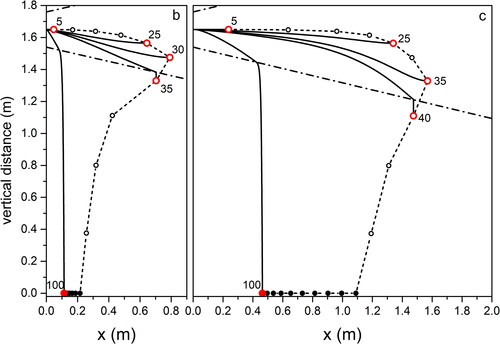
Figure 4. Same as for , for droplet propagation in outdoor environment typical of Seaside in Summertime.
